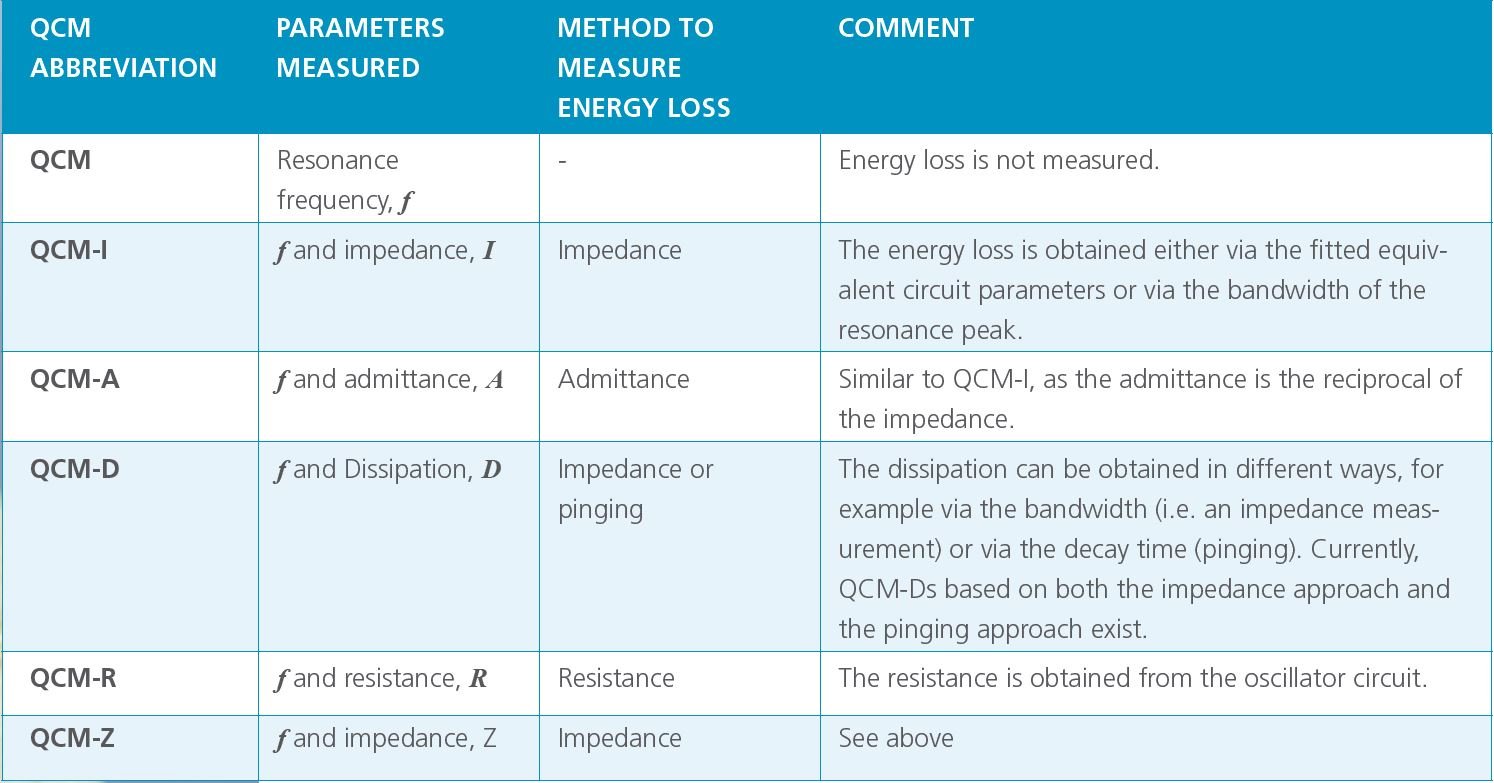Quartz crystal microbalance (QCM) technology has revolutionized the study of thin films and surface interactions. However, when looking at the market of QCMs, one may be overwhelmed by the variety of available options. Different versions such as the QCM-A, QCM-D, QCM-I, and QCM-R all seem to provide similar information, but what are the differences between them, and does it matter which one you use?
The Sauerbrey equation, which is the relation that gave birth to the QCM technology, assumes that the layers to be characterized are thin and rigid. However, as the thickness of the film increases, the material properties of the film will start to matter and influence the accuracy of the mass determined by the Sauerbrey equation. This means that if you intend to study anything else than rigid films in a vacuum, then you need a QCM with additional capabilities in terms of information collection, to compensate for the complexity of the layer.
To evaluate soft and/or thick films, both the frequency and damping of multiple harmonics are needed. Although the technology names out there suggest that there is an immense number of ways to measure the energy loss, there are essentially only three ways to do so, via 1) impedance spectroscopy, via 2) the decay time of the oscillation or via 3) the resistance. The respective QCM abbreviations, however, often give little information on the actual measurement principle, and what information and data quality that the respective technology offers. Below we have summarized a few of the common QCM:s, what the abbreviations mean, and what parameters the respective setup typically measure.

Table 1. Overview of six common QCM abbreviations, including their method approach to measure the energy losses.
So, which of all the available QCM setups should you go for? The answer to this question depends on your intended use of the instrument. Will you measure in gas phase or in liquid? Will you study viscoelastic layers? Will the processes that you are studying be fast or slow? And will you have the need for quantitative information, or will qualitative information be sufficient?
In conclusion, there are many different types of QCMs available on the market, each with its own strengths and weaknesses. When choosing a QCM setup, it's important to consider the intended use of the instrument and select a QCM that is optimized for the specific application. Understanding the differences between the various QCM options, the pros and cons of different ways of measuring, and when and why to select which method is crucial for obtaining reliable and accurate results.
Download the whitepaper to learn more about the differences between the various QCM options, the pros and cons of the different ways of measuring and when and why to select which method.
Editors note: This post was originally published in April 2019 and has been updated for comprehensiveness
Compared to QCM, QCM-D measures an additional parameter, and provides more information about the system under study.
Learn about QCM-D, Quartz Crystal Microbalance with Dissipation monitoring - an analytical tool for surface interaction studies at the nanoscale.
Learn about of the acoustic technology, QCM-D, via musical instrument analogies.
Here we explain how Quartz Crystal Microbalance with Dissipation monitoring, QCM-D, works.
Read about how and the QCM fundamental frequency matters in measurements
Read about why it is important for the mass distribution on the QCM sensor to be even, and what the consequences are if it is not.
Learn more about the Sauerbrey equation and when it should be used.
At first glance, SPR and QCM-D are quite similar. Learn about the key differences and when to use which method
By integrating QCM-D and electrochemistry into EQCM-D, it is possible to answer questions that neither technique could address alone.
